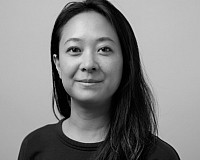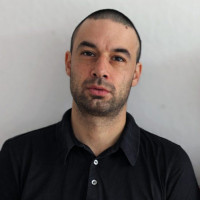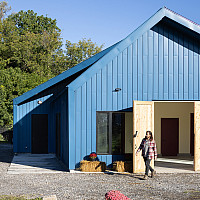Resume Basics
“Elegant, Brief and Well-Organized”
- Describe your life using verb phrases, going back at least 3 or 4 years, even to high school if you are an undergrad. Verbs in the past tense give the reader a mental image of you “doing” something, being productive. Consider everything you have done as an employee, a student, and a volunteer, as well as in your “spare” time. Note every scholarship, academic honor, exhibit, display, publication, awards in music, art, sports, community service.
- Put all dates on the right margin. They are the least interesting part of the resume; don’t force the reader to read them. Also, don’t use the word “I” or use any complete sentences.
- Limit your resume to one page, portrait orientation. Be brief and specific. Avoid “various,” “multiple” and “etc.” Instead, name some of the the specific items to which you refer.
- Minimum font size is 10-point. Use Arial, Verdana, Tahoma or any other sans-serif font style. You can bold, change font size, or other simple graphic devices to create an organized page. Architects like “clean” fonts, and don’t like to see more than one font style on a page.
- All resumes are written in Reverse Chronological Order: most recent experiences at the top of each heading. Create an order of headings that best sells your skill set. If you have done volunteer work related to design or construction, that information will immediately follow your Education heading, while less relevant information will follow under another heading.
- Your “audience” will be a group of designers who are business owners. Think about what business owners need as you list your skills. The first impression they will have of you will be your resume. Design a resume that will appeal to a designer: elegant, brief, and well organized.
Possible Headings
The following headings may appear on your resume. For students, the first heading is usually “Education.”
- Education (include name of university, name of degree {Bachelor of Architecture, Master of Architecture, MS Architecture}, expected date of graduation, city, state, country (if outside USA)
- Employment (include title, name of company, city/state/country, dates)
- Honors
- Skills: analogue, digital, fabrication, art, languages
- Affiliations
- Professional Experience
- Exhibitions
- Related Experience
- Volunteer
- Competitions
Your References and Portfolio will go with you to the interview unless otherwise directed.
Send a cover letter and sample page(s) with your resume unless otherwise directed. Total file size is 3MB max, one multi-page PDF.
Use only one address/phone/e-mail for a more professional “letterhead” look. Most people use the Syracuse address while in school; change to home address when it may be an advantage for you, such as when you live in NYC and you want to work in Brooklyn.
Create 2 versions: Documents viewed on a screen have light behind them. A resume/sample page that looks dramatic (all black with white text) or designs with decreased opacity may be very difficult to read when printed on paper. Design documents to suit the media you will be using.
FORMAT
Minimum = ½” margin for text, all 4 sides to avoid cut-off on employer’s printer.
Even if font color looks dark enough on screen version, check printed version.
B.Arch or M.Arch or MS Arch, not B.A. or B.S. or M.A. or M.S.
Put the month/year of graduation on same line as your degree/diploma.
Place GPA (If 3.0 or above) and Dean’s List on one line.
*Add “working” thesis title below degree.
Went Abroad or to NYC?
International Study – Florence, Italy: Italian language, culture & travel sketching.
Urban Studio - New York, NY: Craig Dykers, Visiting Critic.
Awards: Apostrophe Use: Dean’s List, Founders Scholarship, Chancellor’s Scholarship, National Honor Society =no apostrophe, no plural.
NOT recommended
- Logos made out of your own initials
- Vertical text
- Addresses on the side or bottom of the page
- Background color on your resume instead of white paper
- Typo of any kind
Resume Content
IDP
You may add IDP info to your resume this way:
Under Affiliations OR under Education ~
NCARB: IDP enrolled. 467 hours completed
Thesis Awards
Thesis Citation for Excellence: Title of Your Thesis
Dean’s Citation for Excellence: Title of Your Thesis
Outstanding Thesis Award: Title of Your Thesis
Britton Award for Best Thesis: Title of Your Thesis
Greek Life
Just like politics, religion, and certain causes, many people have a strong bias regarding Greek Life. Consider your target audience if you decide to add Greek Life to your resume. You can use LinkedIn’s “ADVANCED” search to find your brother/sister alums. Just put the name of the house in the “keyword” field at the top of the page. Greek Life may be included under “Affiliations” or under the heading of “Leadership” if you held a position or led a project. You might choose to have one resume version with Greek Life to use only with brothers/sisters.
GPA
It is not recommended to use just your Design GPA on your resume; employers prefer to see your Cumulative GPA.
Most architecture employers will decide to interview someone after seeing a resume that is: brief, organized, elegant and shows a history of balance: academia, work, skills, interests, and service.
Most architecture employers hire for these reasons, in this order: personal communication skills, attitude, attention to detail, portfolio, production skills, previous experience (gpa isn’t on the list).
Minor
List the minor under your architecture degree. If you didn’t complete a minor, you can use “Elective Coursework” under your degree and list only courses that are unique to your specific interests
Objective
“Objectives” for an architecture student’s resume are easily overstated or understated.
Examples of OVERstated:
- To make a difference in the world with my innovative design skills.
- To use my creative design talent to change the societal injustices of our culture.
- To become partner in a cutting-edge design firm.
Examples of UNDERstated:
- To work in a firm and get experience.
- To learn more about the architecture profession.
- To apply my academic knowledge to real projects.
Examples of objectives for SUMMER employment:
- To contribute my skills to your firm through a summer internship.
- To contribute my Revit and Adobe CS skills to your firm through a summer internship.
The greatest enemy of an excellent resume is too much information and redundancy. Every decision you make for the design of your resume is controlled by the amount of white space that you need to keep your resume brief, elegant & organized. A resume must be the truth, but it does not have to be the whole truth. Less is more.
before Sending Resume
When possible, call a contact at the firm first. Having inside information about the culture of the firm and current projects will help you write a stronger cover letter. Ask your contact for the name and title of the hiring manager.
If you get voice mail, leave a message stating your name and that you are a student at Syracuse Architecture. Leave your return number (speak slowly and repeat the #), and say that you are calling because you are interested in exploring the possibility of a summer (or full-time) position.
Posting your resume on the school’s website & Orange Link
If your resume and sample page are posted on the web, firms are looking at your documents. Your phone number and email are available to all employers. Firms may call you to invite you to their office for an interview over spring break or some other date.
First Year Resume
As a 1st-year student, you are not required to have a printed and bound portfolio, but you will want to have an organized presentation of your work. You may show your work to employers on your laptop, but it is recommended to have the pages printed in case of electronic failure. Remember that some of the images in your high school portfolio will be valuable, too. Sketches and other art media are favored by employers.
It is recommended that you upload your images as a portfolio to Issuu so that you can send a link to employers. The file size of most portfolios will prohibit emailing. You may also use that link to review your portfolio with employer during a “Skype” interview.











